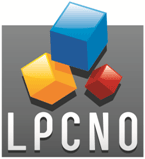SYNTHESIS AND CHARACTERIZATION OF INDUM PHOPHIDE SEMICONDUCTOR NANOCRYSTALS: APPLICATION IN NANOTHERMOMETRY
NANOSCIENCE

Lab: LPCNO
Duration: NanoX master Internship (8 months part-time in-lab immersion)
Latest starting date: 15/10/2025
Localisation: Laboratory of Physics and Chemistry of Nano-Objects
Institut National des Sciences Appliquées - TOULOUSE
135, avenue de Rangueil
Bât. 27
31077 TOULOUSE CEDEX 4 - FRANCE
Supervisors:
Fabien DELPECH fdelpech@insa-toulouse.fr
Céline NAYRAL cnayral@insa-toulouse.fr
This research master's degree project could be followed by a PhD
Work package:
Nanoscale temperature measurement (or nanothermometry) is a major challenge for a wide range of applications.
For example, in the fight against cancer, thermotherapy is a medical technique that is often used as a complement to radio-
therapy or chemotherapy, whose effects it potentiates [1] . Heating agents can be magnetic [2] or plasmonic [3] nanoparticles
(NPs) whose heating power must be controlled to avoid problems of damage to surrounding healthy cells. In a completely
different field, such nano-heaters can be used for nanocatalysis[4] . Activity and selectivity depend then directly on the surface
temperature of the nanoparticles catalyzing the reactions. However, whether at high or low temperature, nanoscale temper-
ature measurement is not trivial, as there can be very significant temperature gradients between the heating element (mag-
netic or plasmonic nanoparticle) and its surroundings[5] .
Thermometric probes have been described at low temperatures
with fluorophores[6] and as well with semiconductor nanocrystals (or quantum dots - QDs)[7] , since their optical properties vary with temperature (Fig-
ure). Compared to fluorescent molecules, QDs are more advantageous be-
cause they are more robust, they absorb and emit light more efficiently and
their optical properties (absorption and emission wavelengths) can be con-
trolled with their size.
That’s why, in the recent literature, different types of QDs have
been studied as nanothermometers like CdSe[8] or complex structure with
core and two successive shells PbS/CdS/CdSe[9] . However, the QDs tested in
this purpose are mainly composed of scarce, toxic elements such as cadmium, lead or selenium. The cost and highly negative environmental impact
of these elements have simulated the search for alternative, more environ-
mentally-friendly materials. Among them, indium phosphide -InP- is focus-
ing aPention due to the low toxicity of its constituent elements [10] and its promising optical properties like the ability to emit
in the near infrared wavelengths which allow to tackle biological applications [11] .
During the past 15 years, our group has developed a strong expertise in InP QDs synthesis and more recently, we have
started to study the temperature-dependent emission of InP QDs. The aim of this master project is to measure with InP-based
QDs the “local” temperature (near to the surface of nano-heaters) of magnetic heating iron-based NPs which can be used for
nanocatalysis and nanomedicine. The objectives of this work will be: (i) to prepare highly emitting core-shell InP/ZnS QDs, (ii)
to study the chemical transformation of the InP/ZnS QDs during heating, and (iii) the development of instrumental set up and
data processing for the temperature measurement.
This topic will cover all organometallic chemistry field to QDs formation, characterization & application. It provides an
opportunity to get familiar with techniques for synthesizing and handling air-sensitive products (Schlenk line, glove box) and
to master a wide range of characterization techniques: NMR spectroscopies, X-ray powder diffraction and electron microscopies (TEM, HRTEM) specific to the study of nano-objects. It will also be an opportunity to refine an experimental installation
and become familiar with Python coding. This project could then be extended as part of a thesis, funding for which is already
obtained.

References: Areas of expertise: Required skills for the internship:
References:
[1] a) H. Zhang & al. Chem. Sci. 2021,12, 12429-12436.
b) M. Bravo & al. J Control Release 2024, 372, 751–777.
[2] J. Asensio & al. Nanoscale 2019,11, 5402-5411.
[3] L. Jauffred & al. Chem. Rev. 2019, 119, (13) 8087–8130.
[4] L.Martínez-Prieto & al. Appl. Nano Mater. 2020, 3, 7076−7087.
[5] Z.J. Díaz-Puerto & al. Nanoscale 2021, 13 (29), 12438- 12442.
[6] A. Riedinger & al. Nano. Lett. 2013, 13 (6), 2399-2406.
[7] D. Jaque & al. Nanoscale 2012, 4 (15), 4301–4326.
[8] S. Li & al. Nano Le9. 2007, 7(10) 3102–3105
[9] H. Zhao, & al. Small 2020, 16, 2000804.
[10] a) S. M. Fairclough, & al. Adv. Op
Nanothermometry, Nanochemistry, Semiconductor nanocrystals, Quantum dots, Organometallic
chemistry, Indium phosphide, Optical properties, Luminescence, Synthesis.
The candidate will have a solid background in general chemistry. We are looking for a curious
person, rigorous and trustable, who likes to share and interact in a working group and who is
ready to apprehend a multidisciplinary subject.
